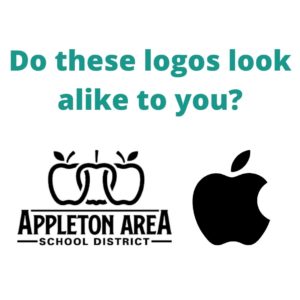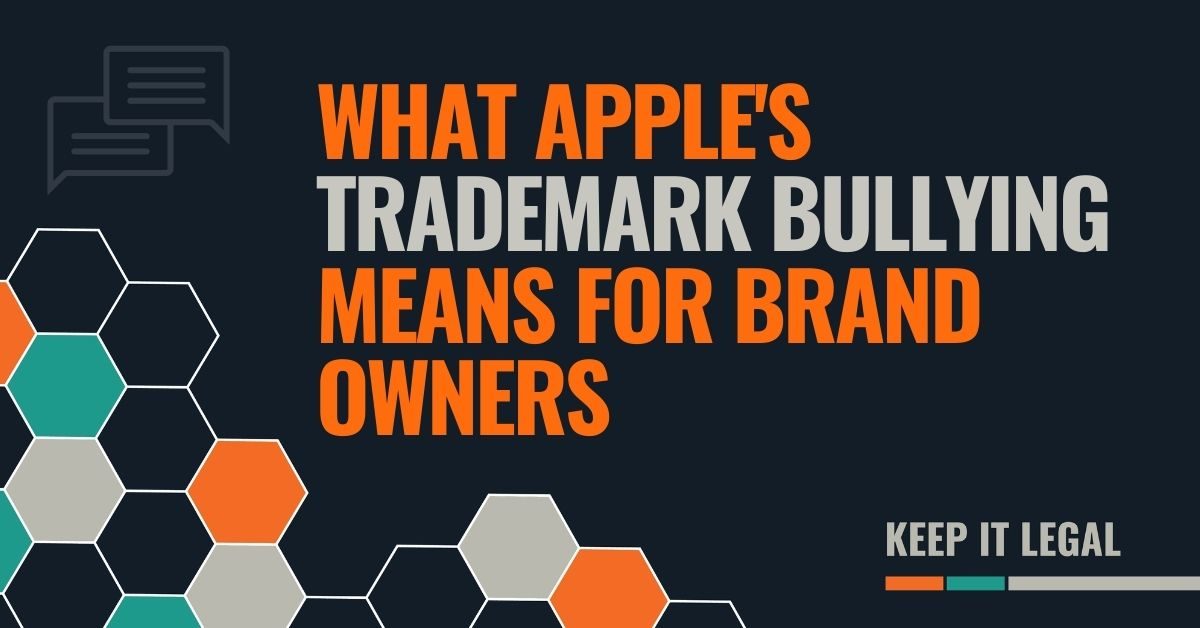A recent article in the New York Times detailed Apple’s aggressive approach to trademark protection. The headline didn’t hesitate to call Apple out for bullying, and I think that’s the right term to use.
The article begins with a story of “one of dozens of entrepreneurs, small businesses and corporations that Apple has gone after in recent years for applying to trademark names with the word ‘apple’ or logos of stemmed fruit.” It goes on to note that “Apple has frequently targeted entities that have nothing to do with tech or that are infinitesimal in size. It has even set its sights on logos that involve other fruits, like oranges and pears” when those logos resemble, in Apple’s view, their famous logo.

Apple even successfully opposed a logo trademark application made by the Appleton Area School District in Appleton, Wisconsin.
Apple’s approach at the United States Patent and Trademark Office (USPTO) makes it even more difficult for smaller businesses (and remember, every business is small compared to Apple). Instead of sending a cease and desist letter and negotiating a settlement, they wait until the trademark application has been approved and is published in the USPTO’s Official Gazette. At that point, they file a lengthy Notice of Opposition before the USPTO’s Trademark Trial and Appeal Board (TTAB).
Because Apple is filing a large volume of these Oppositions, the Notice of Opposition is essentially a copy-and-paste form for them, but the party who receives the opposition must now sift through a multi-hundred page filing document in order to evaluate how to respond. Given that a TTAB proceeding is essentially a form of litigation, the defendant is forced to either abandon their trademark application or to spend a substantial sum fighting Apple before the TTAB. In some cases, Apple is willing to come to terms with the defendant, but it’s still a long and costly process.
The reality is that Apple doesn’t want to fight most of these cases. It’s costly, even with their resources, and they risk an unfavorable outcome. But they know that the vast majority of trademark applicants won’t be willing or able to stand up to them in court or at the TTAB, so despite the bad publicity associated with the Times article, they’re most likely going to continue to abuse the USPTO’s opposition process.
I’ve written about trademark bullying before (11 years ago!), so I won’t reiterate all of my thoughts on the subject. And I’m not calling for a boycott of Apple or anything along those lines (I’m writing this blog post on a MacBook Pro with my Airpods in while my 5-year-old watches videos about garbage trucks on the iPad). However, this article illustrates the care that business owners need to take when selecting a brand name or logo. Failure to stay on top of developments in trademark law and practice, or to have an attorney who is keeping track of these things, can bring unexpected challenges.
The bottom line is, whether it’s fair or not, one should be extra careful when choosing a brand name that includes the word “apple” (even if your business has nothing to do with Apple’s technology products) or a logo that may even slightly resemble the Apple logo. If you do choose to go down that road, be prepared for a legal challenge and plan accordingly.
If you’re dealing with a trademark issue, feel free to reach out to me.


